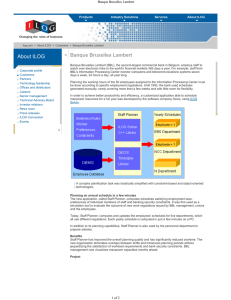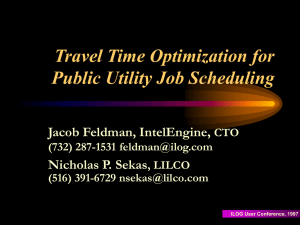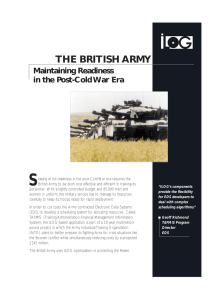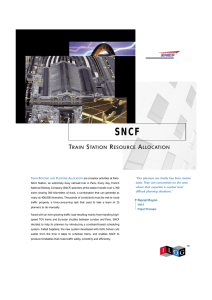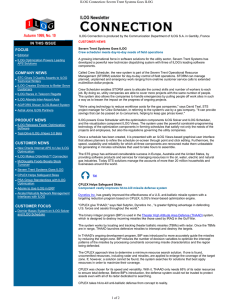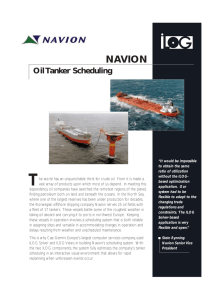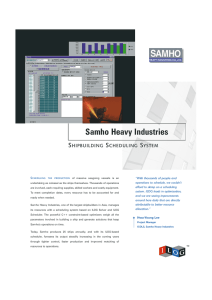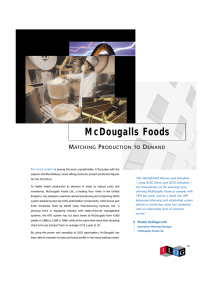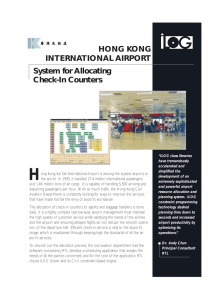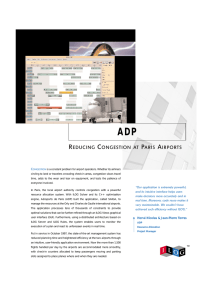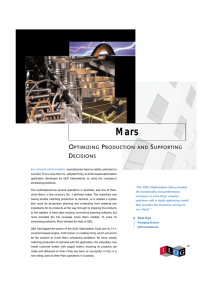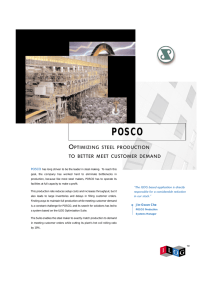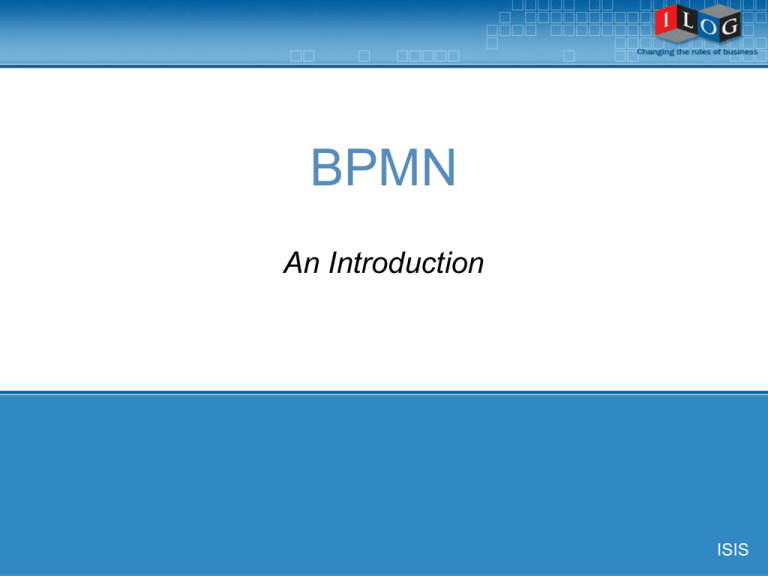
BPMN
An Introduction
ISIS
Definition of BPMN
Business Process Modeling Notation provides:
The capability of defining and understanding their internal and
external business procedures through a Business Process
Diagram.
The ability to communicate these procedures in a standard
manner.
© ILOG, All Rights Reserved
2
Core Set of Diagram Elements
Core set of modeling elements
enables the easy development of
simple Business Process Diagrams
Looks familiar to most Business
Analysts (flowchart diagram)
© ILOG, All Rights Reserved
3
ISIS guideline
Event triggers a process:
Each process should have at least one event
Sequence flow links:
Activities in the same swim lane (see later)
Message flow links:
Activities between teams so swim lanes,
Asynchronous activities.
© ILOG, All Rights Reserved
4
Events
An Event is something that “happens”
during the course of a business process.
Events affect the flow of the Process
and usually have a trigger or a result.
Events can start, interrupt, or end the
flow.
© ILOG, All Rights Reserved
5
ISIS guideline
Intermediate Events:
Request info
Represents an exception or
compensation handling.
Shown by placing the Intermediate
Event on the boundary of a Task or
Sub-Process.
Example: timer expire
© ILOG, All Rights Reserved
5 Days
Inform and close
the call
6
ISIS guideline
Intermediate event types indicate the different ways that a Process
may be interrupted or delayed after it has started.
Compensation Event
This is used for compensation handling--both setting and performing
compensation. It call for compensation if the Event is part of a Normal Flow. It
reacts to a named compensation call when attached to the boundary of an
activity.
Rule Event
This is only used for exception handling. This type of event is triggered when a
Rule becomes true. Link Event
© ILOG, All Rights Reserved
7
ISIS guideline
Link
A Link is a mechanism for connecting an End Event (Result) of
one Process to an Intermediate Event (Trigger) in another
Process. Paired Intermediate Events can also be used as “Go To”
objects within a Process.
Multiple Event
This means that there are multiple ways of triggering the Event.
Only one of them will be required.
© ILOG, All Rights Reserved
8
Activities
An activity is work that is
performed within a business
process.
An activity can be atomic
or non-atomic (compound).
The types of activities that
are a part of a Process
Model are: Process, SubProcess, and Task.
© ILOG, All Rights Reserved
9
Sub-Process
Sub-Process can be in an expanded
form that shows the process details of
the a lower-level set of activities.
© ILOG, All Rights Reserved
10
Connections
A Sequence Flow is used to show the order that activities will be performed
in a Process.
A Message Flow is used to show the flow of messages between two entities
that are prepared to send and receive them.
An Association is used to associate information and artifacts with flow
objects.
© ILOG, All Rights Reserved
11
Gateways
Gateways are modeling elements that
are used to control how Sequence Flows
interact as they converge and diverge
within a Process.
If the flow does not need to be
controlled, then a Gateway is not
needed.
© ILOG, All Rights Reserved
12
Swimlanes
A Pool is a “swimlane” and a graphical container for partitioning a set of
activities from other Pools, usually in the context of B2B situations.
A Lane is a sub-partition within a Pool and will extend the entire length of
the Pool, either vertically or horizontally.
© ILOG, All Rights Reserved
13
Artifacts
Data Objects are not flow objects (i.e.,
connected through Sequence Flow), but
they do provide information about how
documents, data, and other objects are
used and updated within a Process.
Text Annotations are a mechanism for a
modeler to provide additional information
for the reader of a BPMN diagram.
Groups provide a mechanism to visually
organize activities
© ILOG, All Rights Reserved
14
Normal Flow
© ILOG, All Rights Reserved
15
B2B Modeling
Enhancements are being considered for BPMN 1.x
© ILOG, All Rights Reserved
16
Exception Handling
Intermediate
Events attached to the boundary
of an activity represent triggers that can
interrupt the activity.
All work within the activity will be stopped and
flow will proceed from the Event.
Timer, Exceptions, Messages, etc. can be
Triggers.
© ILOG, All Rights Reserved
17
Compensation Handling and Transactions
Transaction is an activity that has a double
border. Transactions are supported by a
transaction protocol (e.g., WS-Transaction).
Normal Outgoing Sequence Flow represents
the path to follow a successful completion.
Cancel Intermediate Event represents the path
to follow a cancelled completion.
Exception Intermediate Event represents the
path to follow a transaction hazard.
Activities used for compensate (with marker)
are outside normal flow and are Associated
normal activities.
© ILOG, All Rights Reserved
18
A Complex Process
© ILOG, All Rights Reserved
19
References
BPMI
www.bmpi.org
BPMN specification
http://www.omg.org/docs/dtc/06-02-01.pdf
BPMN stencil for Visio
See in ISIS: BPMN 0-9-V2003.vss
Enterprise Architect
Business Process Modeling
© ILOG, All Rights Reserved
20

